Connecticut’s Mystic Seaport
This trip, like all the others I’ve shared, always takes longer than the actual going!
We decided to go to Connecticut for a day to meet with some friends. They suggested we go to Mystic Seaport, a maritime museum where they not only have a working shipyard but they also have recreated a village built like it would have been in the 19th century. Most of the “businesses and homes” have people working a particular craft you would have found back then, telling stories or even singing.
(tugboat that was on the waters for many years)
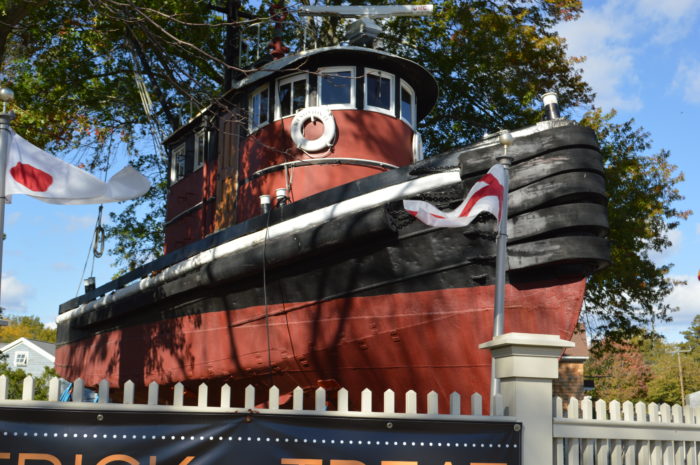
It was a cold, windy day but in the summer it would be most enjoyable strolling around visiting the different buildings.
The Charles W. Morgan was launched in 1841 and is the last surviving registered American whaleship. It had been pulled out of the water for some maintenance.
I learned something very interesting while there. There are shipworms and gribbles and both eat wood and can cause ships to sink.
With gribbles the woods starts to look and act like a sponge. With shipworms you cannot see the damage and yet the wood may have become completely hollowed out causing the ship to collapse or suddenly sink.
Wooden ships were only expected to last about 20 years. The fact that the Charles W. Morgan has lasted as long as it has is testament to the care given it as well as its construction.
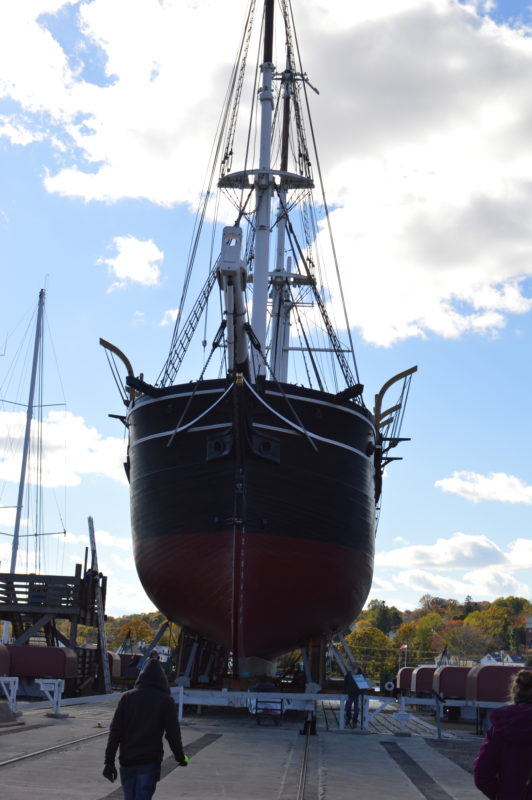
Ship worker at work building a boat.
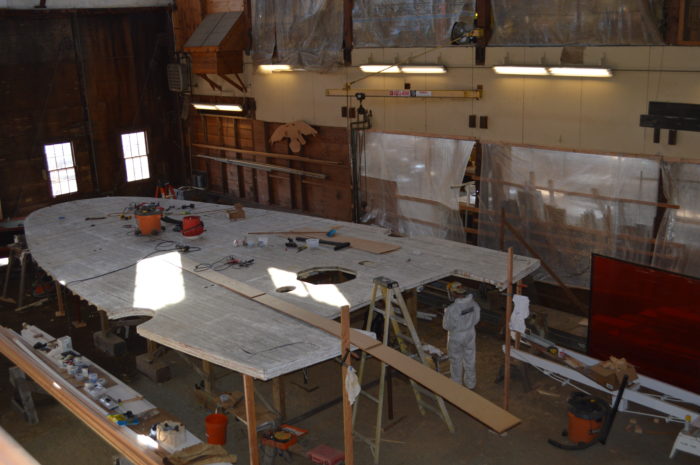
An authentic Viking ship had just been sailed over from Norway. It was beautiful with its wood polished and cared for so well.
Check out that main beam. So tall.
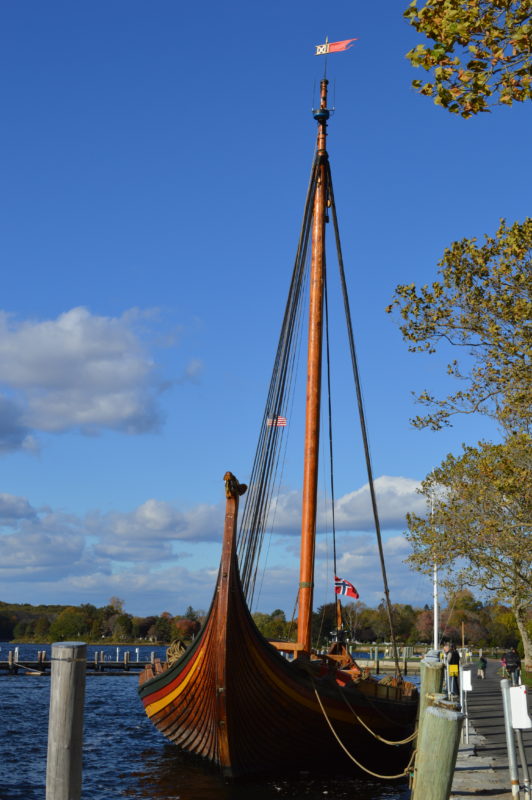
Some salted cod hanging on the wall. Back in the day when they lived this way, they would take the cod and soak it for hours and it became like fresh fish once again.
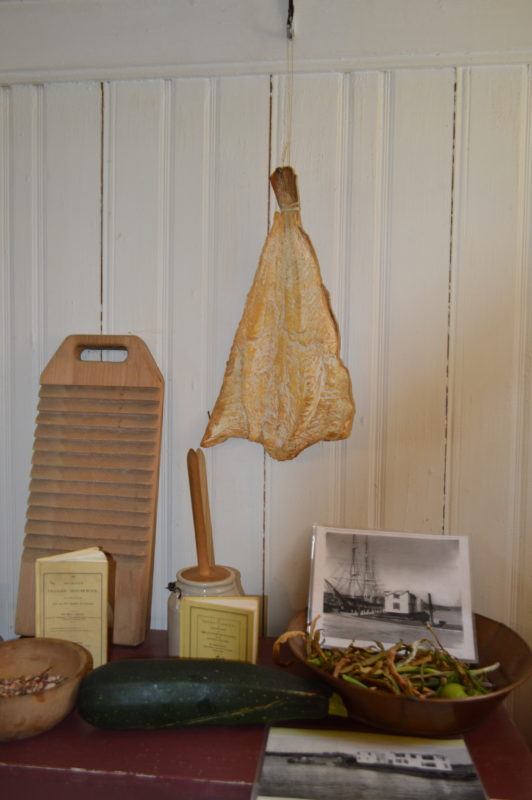
This dentists chair(?) or maybe it was a doctors chair doesn’t look too comfortable.
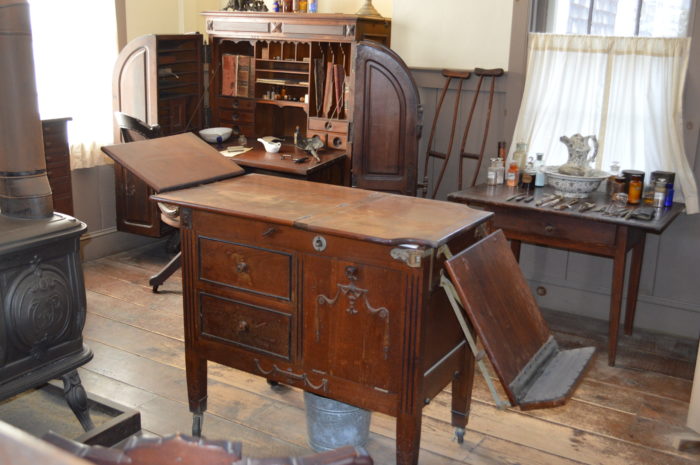
At the coopers workshop…
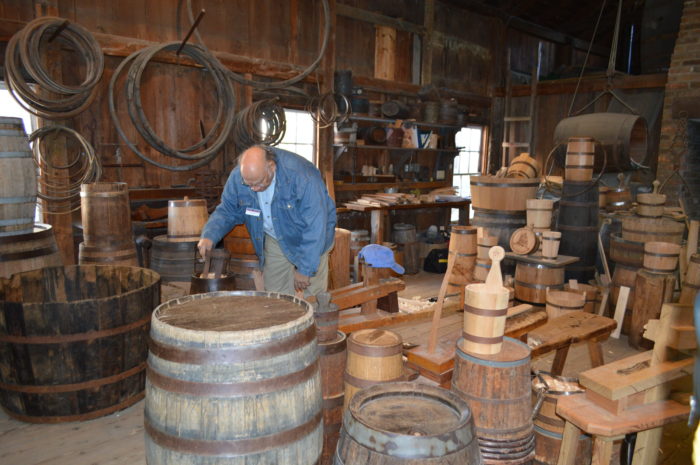
Each of the wood pieces had to be numbered for putting it together.
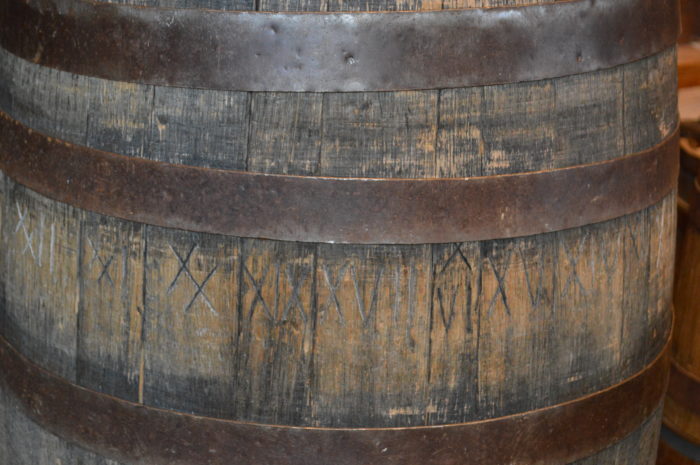
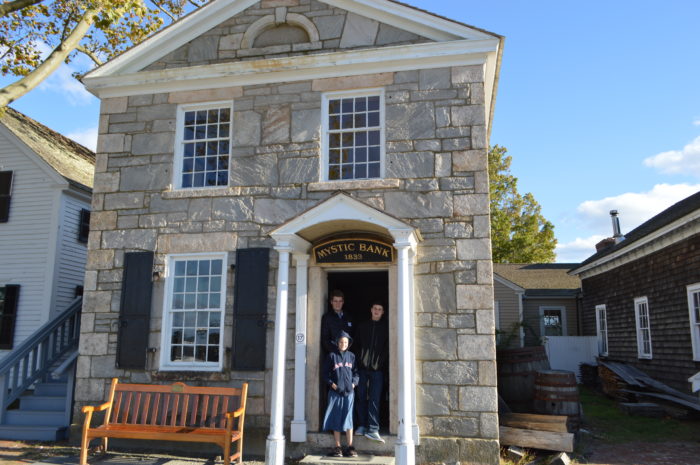
The most fascinating thing of all for me was the buildings where they showed how rope was made.
I believe that is hemp floss hanging on the left which they then twisted into strands and from there made rope.
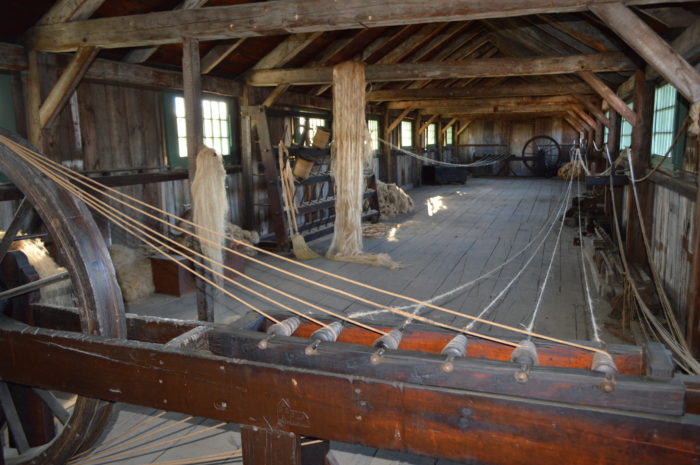
Once it went from its raw material into a strand, it then went on these spools and was threaded as you see below.
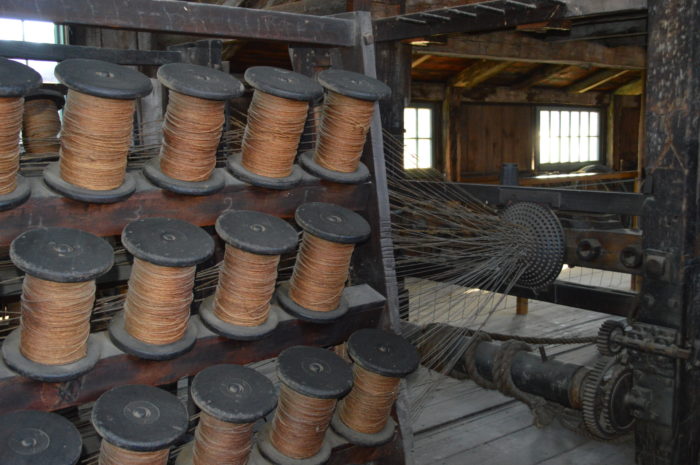
This building is where they would walk the rope. The length of the building determined how long the rope could be before it would have to be spliced together.
Ships the size of the Charles W Morgan (picture posted above) would need more than 2 miles of rope for its rigging.
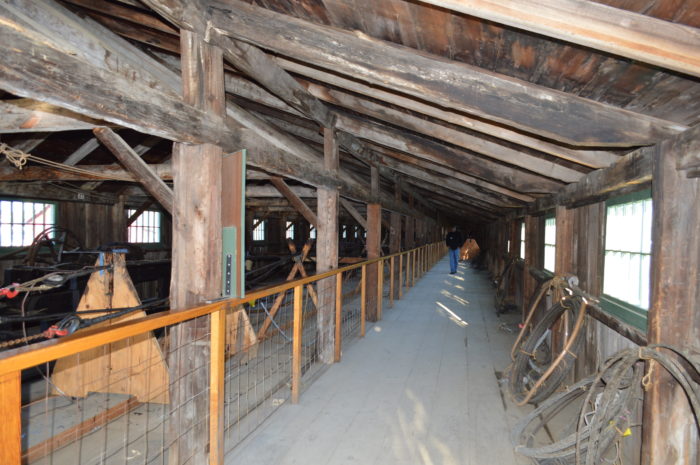
“Ropemaking was a financially risky business. Ropemakers paid to import their raw materials months or years before they would be needed, managed a large work force while keeping their costs as low as possible, and then sold rope on long-term credit to shipowners engaged in equally risky business.” (taken from sign at Mystic Seaport)
Look at this rope!
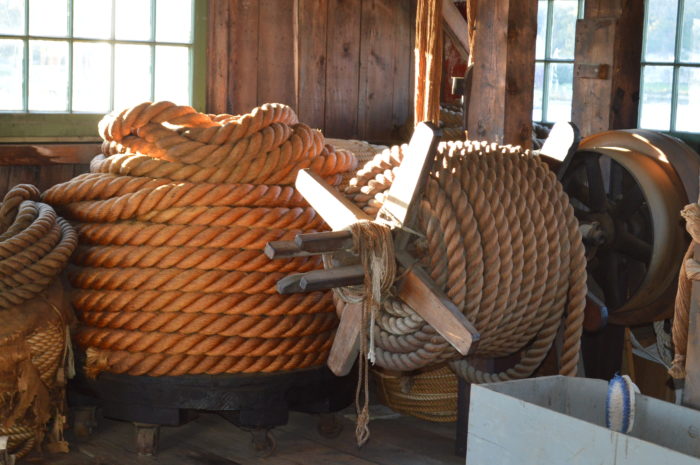
Did you know that Henry Wadsworth Longfellow wrote a poem about the ropewalk? This is only a part of the poem. You can read the rest here.
The Ropewalk
by Henry Wadsworth Longfellow
In that building, long and low,
With its windows all a-row,
Like the port-holes of a hulk,
Human spiders spin and spin,
Backward down their threads so thin
Dropping, each a hempen bulk.
At the end, an open door;
Squares of sunshine on the floor
Light the long and dusky lane;
And the whirring of a wheel,
Dull and drowsy, makes me feel
All its spokes are in my brain.
The Plymouth Cordage company, which owned this ropewalk, at its peak in the 1800’s had 950 employees.
Oh, how pretty Connecticut was with its coastal homes and fall colored leaves.
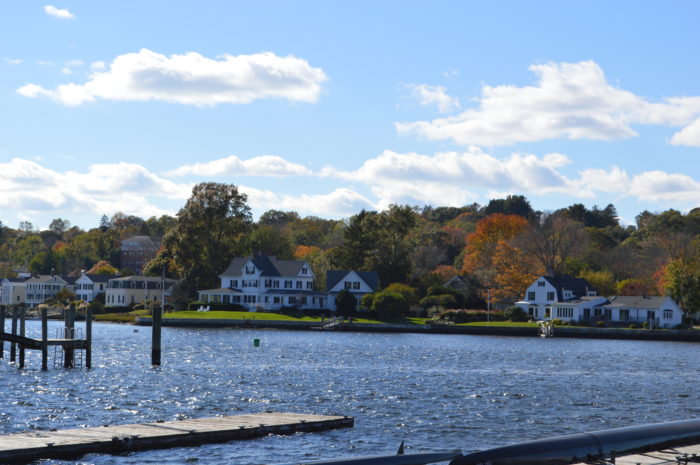
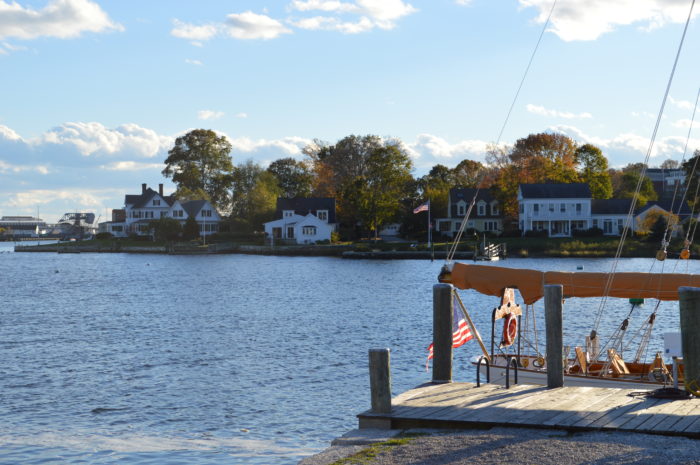
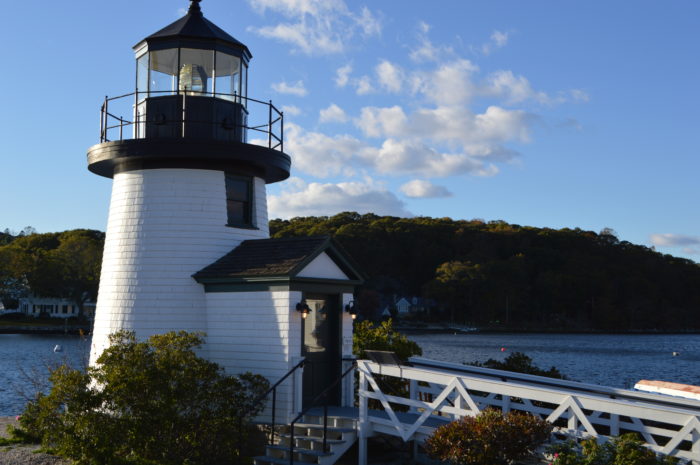
Hi there!
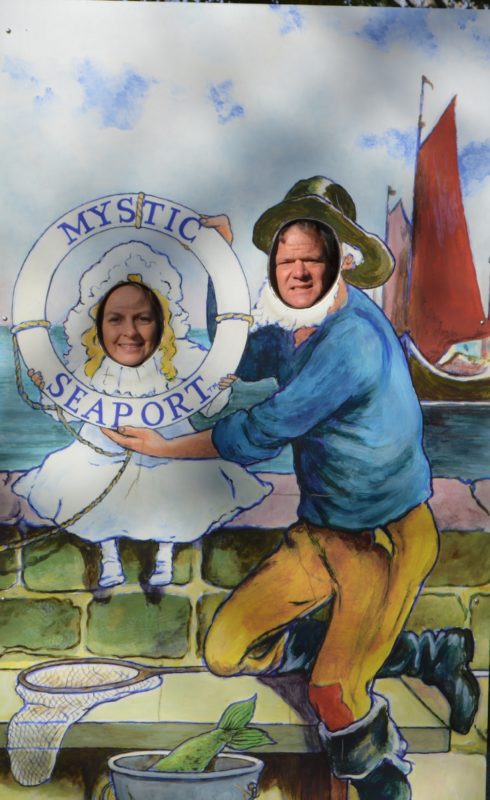
The next morning we had a little fun with our host’s police car before saying our goodbyes…
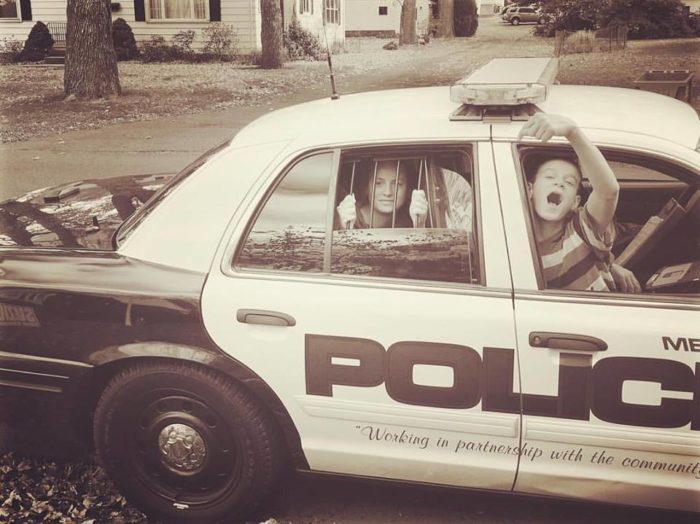
And off to New Jersey we went.

4 Comments
JS
Beautiful pictures above and previous posts! Fascinating about the ropes! All new to me!
Thanks for sharing your trip! It’s nice to travel such a distance without leaving my comfortable perch!
Elisabeth
Thank you; I appreciate your kind words.
Anna
This reminds me of our homeschool field trips – living near the Great Lakes, there were a “great” many such museums;) Loved that poem!
Elisabeth
Interesting!